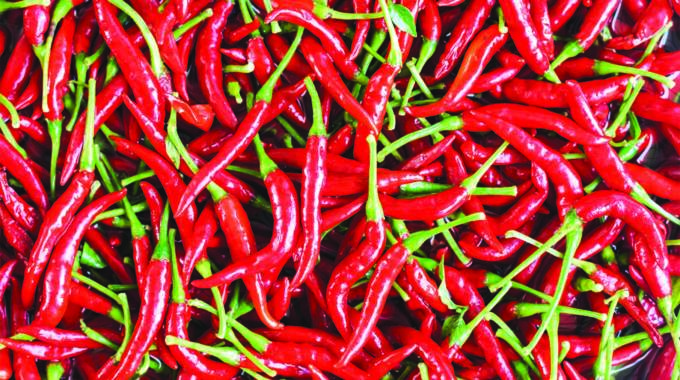
The Sunday Mail

Trade Focus
Allan Majuru
CONVERSATIONS on the export potential of Zimbabwe’s horticulture sector have often focused on international markets such as Europe, Asia, and the Middle-East.
However, the Intra-African Trade Fair — which ends today in Durban, South Africa — revealed a high potential for Zimbabwe’s produce in African markets.
Some of the buyers who visited Zimbabwe’s pavilion where 30 companies were exhibiting said they are confident that the quality and high test of locally-grown produce can compete well in their markets.
This dovetails with positive reviews that local farmers often receive from buyers in international markets that Zimbabwean-grown fresh produce is among the best in the world.
What this means is that local farmers should create linkages with buyers in the African continent as this will help diversify their export markets, and in turn increase their exports.
As farmers create these linkages, they also need to consider products whose demand has been growing across the world, including African markets.
For example, the growing global demand for spices presents an opportunity for local producers to increase exports of chilli pepper into the world market.
Given the suitable and large land area available for production, Zimbabwean farmers have capacity to produce enough supplies that will increase the country’s share of the global market.
According to Trade Map, global trade in chillies has been picking up in recent years. For example, global imports of chillies have grown from US$3,42 billion in 2018 to US$3,78 billion in 2020.
Demand is projected to go up due to the consumers’ inclination towards organic and natural ingredients.
The upward trend is also driven by increasing demand for healthier food additives for making spice oils and natural colouring agents in Europe.
Currently, the United States of America, whose import bill for chilli peppers stood at US$648 million in 2020, is currently the largest market for chilli peppers and presents opportunities for value-added products such as chilli sauce and powder.
Other top markets for chillies for Zimbabwean growers are China, Thailand, Germany, Spain, United Kingdom, and Malaysia.
Although Zimbabwe has good soils and a climate that favours production of a variety of chilli peppers, there is room to grow its share of the global market.
Zimbabwe’s current top markets for chillies are South Africa and Mozambique but there is potential to diversify into other markets in the region like Namibia, Angola, Botswana, and international markets such as the United Kingdom, the Netherlands, and Poland.
Learning from other African countries
While the country is still to unlock its full export potential for chillies, other African countries such as Morocco, Uganda and Kenya are doing well in the European and other world markets.
According to Trade Map, major chilli exporting countries from Africa in 2020 are South Africa, Madagascar, Morocco, Zimbabwe and Ethiopia.
The success of these countries is largely backed by their production sizes as buyers in the European market favour larger producers as this guarantees uninterrupted supply.
Thus, local farmers in Zimbabwe could leverage on the vast land resources and good soils to sustainably increase their production capacities.
The most popular chilli pepper is bird’s eye, which is not difficult to grow.
It can be grown in open fields, greenhouses, under shade nets, pot, containers and even in back yards.
In addition, fresh chillies that are organically grown in Zimbabwe can be competitive on the export market as more people are increasingly paying attention to healthy eating. Zimbabwean farmers can improve their competitiveness and achieve the required volumes by developing effective produce consolidation models.
This allows smallholder farmers, whose capacity is small, to combine produces and contribute enough export figures.
Going forward, local farmers should maximise on the potential presented by export markets to grow varieties that are in demand.
To achieve this desired crop, farmers should leverage on services offered by ZimTrade — the national trade development and organisation that offers support to farmers – in the form of technical advice to ensure conformity to production standards, placement of appropriate infrastructure required to store and pack fresh fruits and vegetables.
Working with European experts from Netherlands-based PUM and SES of Germany, local farmers can grow the right crop that will be competitive on the global market.
It is also important for farmers to meet market access requirements.
These include regulatory and other compliance issues governing the trade of agricultural produce.
ZimTrade, under the European Union funded Trade Comm II, is implementing a programme that will strengthen the capacity and competitiveness of small-scale horticultural farmers, including those that are growing chilli peppers.
The specific aim of the programme is to capacitate farmers on market access and value-chain compliance requirements.
Producers and exporters of chilli peppers who comply with certification schemes that are in line with the Global Social Compliance Programme have a higher chance of being accepted by European supermarkets.
If exporting fresh chilli peppers, local sector players must comply with certification such as Global GAP.
There are other social and environmental compliance requirements in some European markets.
ZimTrade can also assist local farmers and exporters on areas such as packaging and labelling as different markets have different product expectations.
For example, European chilli pepper buyers indicate that when packaging, the product must be uniform and of the same variety and size.
To meet potential buyers, ZimTrade also facilitates for local exporters to take part in specialised trade fairs where they will expose their products to the export market.
Allan Majuru is ZimTrade chief executive officer.



